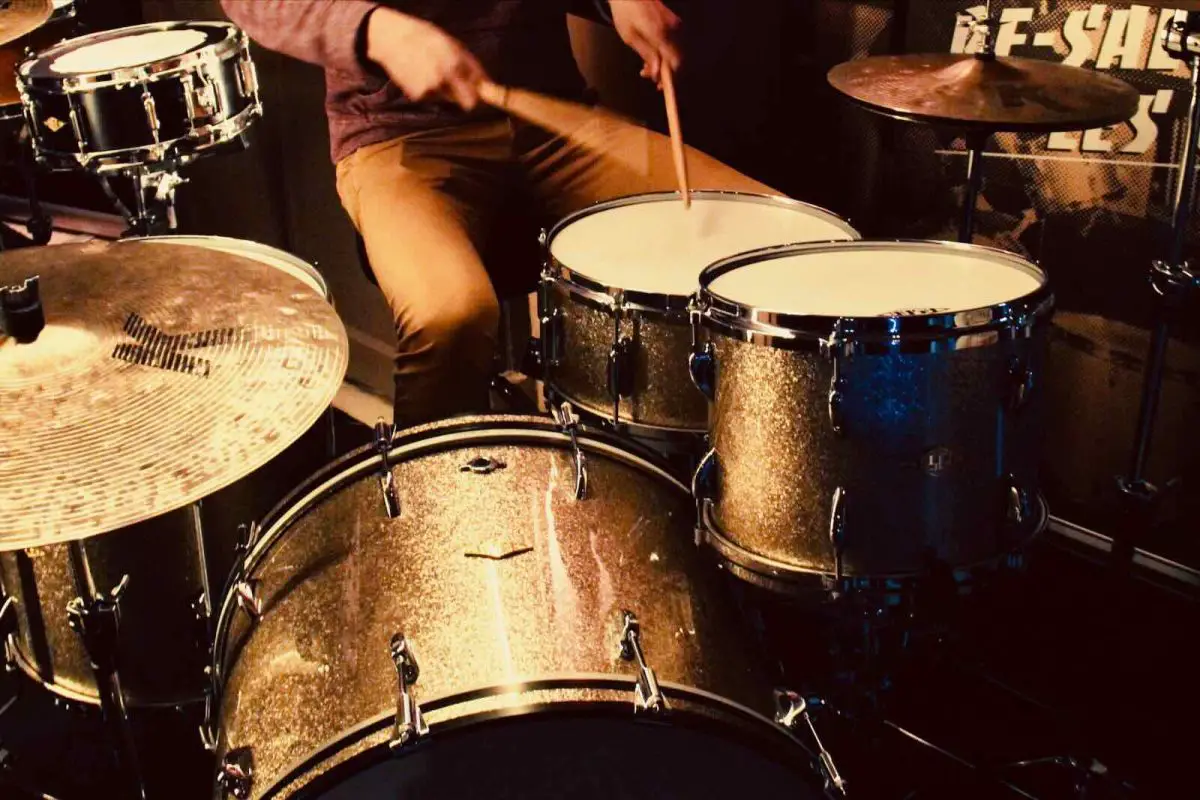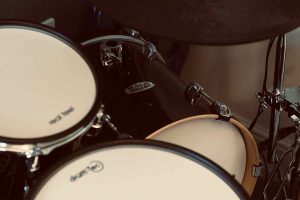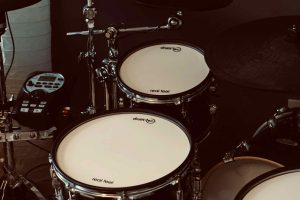If you’re thinking about taking up the drums, then money may be a consideration. In this post, we take a look at typical costs for getting started, including both the drums and lessons. Plus, we consider how to save money on drumming, such as buying used and ways to only buy the gear you need, not what you want. Finally, consider if drums are cheaper than guitar, and what to consider if you’re choosing between these two popular instruments.
How much does it cost to get into drumming?
There are two main areas you might spend money on when it comes to learning the drums: buying drum equipment and taking drum lessons. Here’s a quick rundown of some typical costs you might incur in the first year of drumming:
- Quality starter/intermediate drum kit – $900
- 6x in-person drum lessons: $240-$480
- Drumeo 12-month online drum lesson subscription: $240
- Intermediate level cymbal pack: – $650
- Drum stool, sticks, heads and other hardware: $100-300
A cheap acoustic drum kit with starter cymbals can be purchased for around $380, such as this basic Ludwig BackBeat kit or this PDP kit. However, be aware that these cheap kits tend to come with basic brass cymbals that don’t sound great at all, while the cymbal stands and hardware will be very basic.
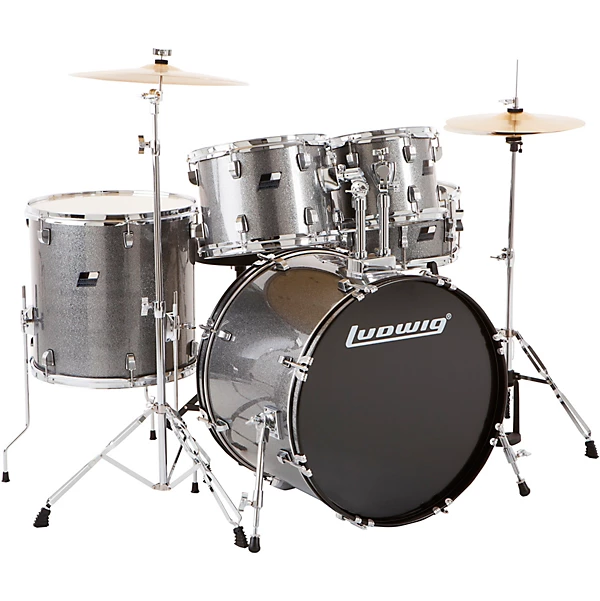
For an acoustic kit that can serve you well as you develop your skills, it can be better to spend around $799-899 on a kit such as this Tama Imperialstar or this Mapex Venus, and then upgrading the cymbals with a cymbal pack once you’ve learnt the basics.
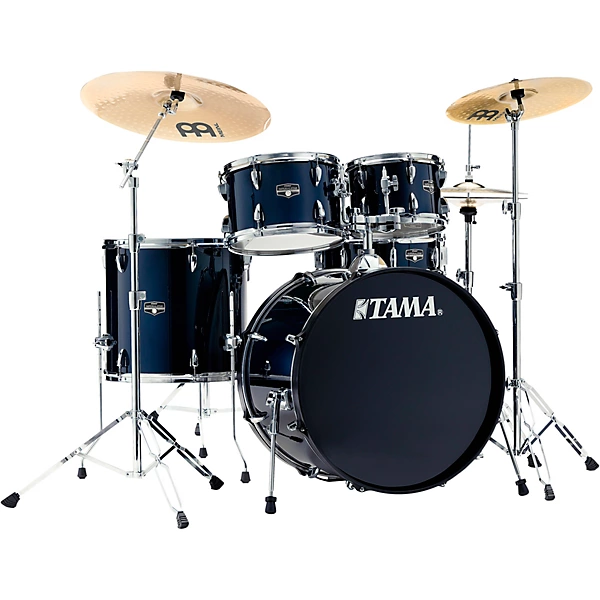
For electronic drums, a good starting point is around $749 which will get you this Roland TD-07 DMK which contains everything you need and will serve you reliably for years to come. Yes, you can buy eDrums for less than this, but they tend to sound and feel more like toys than musical instruments, as you’ll see in our guide on how much eDrums cost.
The next biggest expense will be drum lessons. When you’re just starting out, it’s a good idea to have one-on-one tuition in person. With in-person lessons, your drum tutor can help you with ensuring you have good posture and technique from the get go. It’s important to build this habit early on to avoid injury.
After learning the basics, you may decide to save money by using an online video drum lesson service such as Drumeo. Having used Drumeo and other online drum lessons in the past, the main thing to know is that staying motivated can sometimes be a challenge, since there isn’t a tutor in the room to help you when you get stuck. If, like me, you sometimes struggle with motivation, then you might find sticking with in-person lessons could be the best way to ensure you make gradual progress towards your drumming goals.
Don’t get carried away with buying drum gear
It’s all too easy to let your interest in drumming turn into an obsession for having the latest and best gear.
As you develop, you may become more attuned to the quality of your drum sound, and may gradually want to upgrade your drum heads, cymbals, snare, or even buy a new high-end drum kit.
Personally, this is pretty much the journey I went on, starting with a beginner kit and upgrading almost every part of it, owning a few electronic kits and upgrading those, then getting a new acoustic kit and building my cymbal collection, selling my unwanted gear in the process to help fund upgrades.
However, despite having a huge interest in drumming gear, more recently I’ve tried not to get too carried away with owning the latest and greatest all the time. Here are some lessons I’ve learnt along the way for any newer drummers to consider if they’re trying to keep the costs down for this great hobby:
- Only upgrade when you’re “ready”. As a teen, I was obsessed with upgrading my cheap Zildjian ZBT cymbals with Zildjian A Customs, spending all my money on buying new cymbals every few months when I could afford it. In truth, I wasn’t quite ready, as I’d only recently cracked one of my ZBT crash cymbals due to poor technique. If you find yourself cracking cymbals, don’t be tempted to buy expensive ones until you’ve fixed your technique, to avoid expensive cymbal replacements
- Learn how to tune your drums. Even expensive drums won’t sound great unless you tune them well. If you want a new drum kit, chances are it’s because you think your current one doesn’t sound great. Invest your time and effort into learning how to tune your drums first. If you can’t make your cheap kit sound great, chances are you won’t make the most of a high-end kit either.
- Invest in versatile cymbals. The only cymbals you really need to play any song is a set of hi-hats, a ride, and a pair of crash cymbals. Effect cymbals like splashes or chinas might sound cool, but aren’t necessary – all songs can be played on a basic drum kit.
Cut costs by buying used equipment
If you’re new to drums and are on a budget, buying used gear is a great way to save money. Often, entry to intermediate level kits can be had at steep discounts compared to buying new. These kinds of drum kits come up frequently on the used market, as each year thousands of people take up the drums but don’t stick at it or decide it’s not for them. You can take advantage of this by picking up their unwanted gear for a steep discount.
To find these listings, you’ll often need to search for very broad keywords such as simply “drum kit”. Often, these unwanted drum sets will be listed by inexperienced drummers or non-drummers such as parents clearing out their kids’ unwanted gear, and they often don’t know what they have.
Pricing can vary – some sellers will drastically overvalue their equipment, while others don’t know what they have and can sell at a significant discount. If you want to find a great deal buying used drums, try some of these tips:
- Examine photos carefully for drum badges to check the model name, and research their value online. If it’s an older model that is no longer sold, try searching Google for the drum make and model plus “discontinued”, and you can often find out what replaced it, for a rough price comparison
- Even if you want to buy locally, check national listings on sites like eBay or Reverb to get a more accurate picture of what price you should pay
- Factor in shipping or collection costs. A full drum kit is very expensive to ship, so you’ll most likely need to collect, so make sure this is feasible. Be sure to meet the seller in a safe location.
Are electronic drums cheaper than acoustic?
Generally, good acoustic drums come in a much broader price range than electronic drums. You could pick up a set of acoustic drums or electronic drums for $400/£300, but the quality for either will not be great. However, the acoustic drums will sound and feel like proper drums, while the eDrums will look and feel more like a toy.
Whether you choose electronic or acoustic, a good price for a beginner kit is around $850, whereas a more fully-featured, higher quality kit starts at around $1,500.
If you’re in the market for a new electronic drum kit, check out our rundown of the best Roland drums, or learn more about acoustic vs electronic drums.
Are drums cheaper than guitar?
Drums and guitar are both popular instruments, and often beginners will want to weigh up the costs before committing to one instrument.
It’s true that a cheap guitar can be purchased for much less than an entry-level drum kit. However, regardless of which instrument you choose, it’s easy to spend a lot of money if you upgrade your gear or add new drums or guitars to your collection.
A high end guitar can easily cost over $2,000, which is comparable to a high-end drum kit. And because of their smaller size, guitars are easier to collect. Most guitarists I’ve played with own at least two or three guitars as a result. More than one guitar is almost a necessity if you get into gigging, since you may need guitars in different tunings to avoid having to retune on stage.
Ultimately, when choosing if you should play guitar or drums, it’s better to pick the instrument that you really feel motivated to learn, and not worry about the cost. You might save money picking a guitar, but if playing it doesn’t spark joy, you won’t feel motivated to continue to develop your skills.
Of course there are other factors too, which we go into more depth in our guide on is it better to learn drums or guitar.
This article contains affiliate links. If you purchase a product through certain links on our site, we may earn a small affiliate commission. Learn more about our adverts and why you can trust eDrumHub here.
